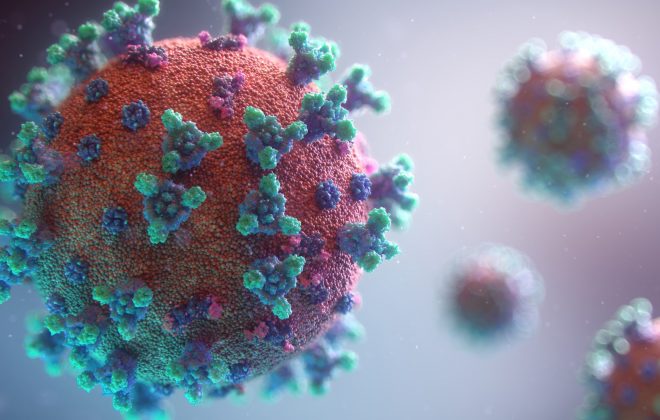Imaging Back Pain – Part 2
Dr Pierre Vassallo
Introduction
The first part of this series that appeared in the last issue of The Synapse Journal presented the mechanisms of discogenic back pain. This second article will discuss the osseous causes of back pain, their mechanisms and MR imaging findings. The osseous causes of back pain that will be discussed will include metabolic, infections and neoplastic diseases.
- Vertebral Endplate
Damage to the vertebral endplate is a frequent cause of low back pain.
The vertebral endplate is composed of two layers: a layer of hyaline cartilage that abuts the intervertebral disk and a layer of cortical bone (subchondral plate) that separates the hyaline cartilage from the vertebral marrow. A network of blood vessels crosses these two layers to transfer nutrients between the vertebral marrow and the intervertebral disk (Fig 1). The endplate is thinnest centrally, while cervical endplates are thinner than lumbar ones.
Degenerative Endplate Disease
The vertebral MR findings seen as a result of degenerative disk disease were first described by Modic et al in 1988.1 The MR grading system developed by Modic has been widely used to report the stage of endplate damage.
Modic type 1 changes include areas in the vertebral body adjacent to the endplate that are hypointense on T1-weighted images and hyperintense on T2-weighted and STIR images (Fig 2). Foci of contrast enhancement may be present within these areas on contrast-enhanced T1-weighted images. These foci represent an inflammatory reaction related to the release of interleukin-1-beta, an inflammatory mediator; this results in fibrosis, angiogenesis, and neurogenesis. These mechanisms induce nociceptive pain.
There are three theories as to how Modic changes occur. The first theory suggests that microfractures resulting from trauma to a normal endplate or to an endplate weakened by age induces an inflammatory response in the adjacent bone marrow. The second theory is that trauma results in microfractures that allow permeation of nucleus pulposus into the vertebral medulla that stimulates the inflammatory change. The third theory is that a transient bacteraemia with low-virulence bacterial strains occurs. These colonise and proliferate in the bone marrow adjacent to the vertebral endplate resulting in an immune response with inflammatory change. This explains why in addition to NSAIDs, physiotherapy and even antibiotics have been prescribed for the treatment of pain related to Modic type 1 changes.
Modic type 2 changes are represented by areas of hyperintensity on both T1- and T2-weighted images in the bone marrow adjacent to the endplates (Fig 3); the hyperintensity is suppressed on fat-suppressed images such as STIR. The increased signal on T1-weighted images is the result of deposition of fatty yellow marrow and is not related to any inflammatory processes. This explains why Modic type 2 changes are less likely to cause pain than type 1 changes.
Type 1 changes normally transition to type 2 changes. However, type 2 changes may revert to type 1 changes. Activation of inflammatory mechanisms within areas of type 2 change are speculated to induce conversion of fatty marrow to red marrow with re-activation of inflammatory mechanisms.
Modic type 3 changes are described as areas of hypointensity on both T1- and T2-weighted images in the bone marrow adjacent to the endplates (Fig 4). Type 3 changes are due to sclerosis and are not associated with stimulation of the inflammatory cascade, neurogenesis or angiogenesis. Type 3 changes are therefore less likely to cause back pain than type 1.
Modic type 1, 2 and 3 changes are considered to represent a continuum of the same process starting with acute inflammation and ending with sclerosis. Mixed types including type 1 and 2 or type 2 and 3 may also be observed.
- Osteomyelitis-Discitis
Osteomyelitis-discitis is an inflammatory process caused by infection of the disk that extends to adjacent vertebral bodies; this is why discitis is seen in the two contiguous vertebral bodies. The vertebra body changes include areas of low signal on T1-weighted images and high signal on T2-weighted and STIR images with enhancement on contrast-enhanced T1-weighted images (Fig 5). The high T2 and low T1 signal is due to bone marrow oedema. Contrast enhancement is due to leakage of intravascular contrast material from damaged vessels into the interstitial spaces within the bone marrow.
Inflammatory change and infected disk material may break into the ventral epidural space resulting in mechanical and chemical processes that are similar to an acute herniated disk. These processes include neurological impingement and nociceptor stimulation due to release of inflammatory mediators resulting in acute back pain. Angiogenesis and fibrosis caused by infection lead to the increased presence of inflammatory cytokines and fibrotic mechanical stress on the disk and nerve roots.
Acute pain can be a patient’s only presenting symptom before laboratory data suggestive of infection or fever are acquired.
Immune-mediated inflammatory responses may persist after treatment of the infection, leading to prolonged symptoms despite resolution of the infection.
Most cases of osteomyelitis-discitis arise from haematogenous spread of infection from remote infected foci. Some cases are caused by direct instrumentation or by continuous spread from superficial foci of infection (e.g. pressure sores).
Standard treatment for osteomyelitis-discitis usually involves administration of parenteral antibiotics. However, bacterial colonies may survive in a biofilm environment, which shields them from antibiotic treatment. Surgical drainage and debridement may be required for persistent foci of infection.
- Bone Metastases
Bone is the preferential site of metastasis from cancers most notably breast, prostate, lung, renal and thyroid cancers. Most bony metastases appear low signal on T1-weighted images, high signal on T2-weighted and STIR images and show enhancement on contrast enhanced T1-weighted images (Fig 6).
One of the classic findings that helps distinguish metastatic disease from benign disease is involvement of the pedicles, laminae, spinous and transverse processes, and adjacent soft tissues. This is less common in benign diseases but may occur in osteomyelitis. Dynamic-contrast-enhanced MR imaging has also been reported to help with hypervascular bone metastases, which show increased blood flow, volume, and vascular permeability.
Direct compression of the neurological and musculoskeletal structures by the tumour or associated fractures causes neuropathic pain, while the release of many chemical mediators of pain such as proinflammatory cytokines stimulate nociceptors of the periosteum and bone marrow that induce the nociceptive pain.2
Cancer-induced bone pain is the most common consequence of bone metastases, and the treatment options available vary from surgical intervention to drug treatment depending on the patients’ symptoms, prognosis, and general state of health.
Surgical treatment is indicated in addition to palliative treatment with corticosteroids when tumor metastasis or fractures result in vertebral compression. Among surgical procedures, nerve destruction such as spinal cordotomy may be indicated in patients who are resistant to palliative drug treatment.
Radiation therapy and kyphoplasty with radiofrequency ablation may also be used to obtain pain relief and induce ossification of osteolytic lesions, which stabilizes the bone and also desensitizes the innervated portions.2 Among the pharmacological treatments, NSAIDs are effective in pain relief because of their blockage of inflammation induced by cyclooxygenase-2.3
The next and last part of this series on the mechanisms of back pain will deal with spinal fractures and osteonecrosis, facet joint disease and paraspinal/myofascial disease. Treatment options will be discussed based on each pain mechanism.
Figure Legends
Figure 1: The vertebral endplate is composed of two layers, the hyaline cartilage layer contacts the intervertebral disk, while the cortical bone or subchondral plate contacts the vertebral marrow. Perforating vessels traverse the endplate to transport vital nutrients from the bone marrow to the intervertebral disk.
Figure 2: Modic type 1 changes are seen in the vertebral bodies abutting L5/S1 intervertebral disk; these appear hypointense on T1w images and hyperintense on T2w images (arrows).
Figure 3: Modic type 2 changes are seen as areas of hyperintensity in the bone marrow adjacent to the endplate on both T1w and T2w images (arrows).
Figure 4: Modic type 3 changes are described when the bone marrow adjacent to the endplate is hypointense on both T1w and T2w images (arrows).
Figure 5: Osteomyelitis-Discitis seen at L1-2 level (arrows) with high T2 signal on the T2w image due to bone marrow oedema. Loss of bone marrow fat signal is seen on the T1w images. There is diffuse enhancement throughout both L1 and L2 vertebral bodies seen on the contrast enhanced T1w images; this is due to damaged and leaking vessels caused by osteomyelitis. Note that enhancement is particularly evident in the involved endplates (arrowheads).
Figure 6: Bone Metastases are seen in T12 and L1 vertebral bodies. These show low signal on the T1w image and high signal on T2w image due to bone marrow oedema. Marked enhancement is seen on the fat-suppressed contrast-enhanced T1w image. Note that a burst fracture of L1 has resulted in protrusion of bone fragments and tumour into the spinal canal (*) with impingement on the spinal cord. Also note contrast enhancement (arrowheads) in the pre-spinal soft tissues that is likely related to the fracture and leaking damaged vessels.
References
- Modic MT, Steinberg PM, Ross JS, et al. . Degenerative disk disease: assessment of changes in vertebral body marrow with MR imaging. Radiology 1988;166(1 Pt 1):193-9.
- Falk S, Dickenson AH. Pain and nociception: mechanisms of cancer-induced bone pain. J Clin Oncol 2014;32(16):1647-54.
- Kam NM, Maingard J, Kok HK, et al. Combined Vertebral Augmentation and Radiofrequency Ablation in the Management of Spinal Metastases: an Update. Curr Treat Options Oncol 2017;18(12):74.



